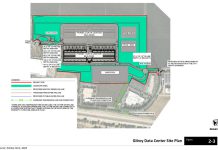Gilroy – Most teachers pride themselves on real world experience, and one professor at Gavilan College offers half a century of working with computers.
Computer Science instructor Dennie van Tassel, 65, has watched computers evolve since 1957 and provides students at Gavilan just a bit of his real world knowledge.
Tassel, a teacher for 38 years, began working for Gavilan at the height of the dot com boom in the late 1990s. When he joined, computer instructors with real world experience were hard to find since many were joining the high-tech field for the money.
But Tassel wanted to teach.
He began in 1967 at the University of California, Santa Cruz, which had one computer for the entire university: an IBM 1620, with four kilobytes of core memory. (Computers today have more than 1 million times more memory).
In the early 90s, Tassel was forced to retire when the university faced budget cuts. For the next few years, he became what he called a “freeway flyer,” a teacher who goes from school to school for his classes. He taught at Hartnell, Cabrillo and West Valley community colleges.
Finally, in 1998, Tassel got a full time job with Gavilan where computer classes were always filled.
“We could have offered a class at four in the morning and it would be filled,” he said.
Tassel said some of his students landed jobs that paid upwards of $70,000, and some, he admitted, were not the best students.
The bubble has since burst on the dot coms, but Tassel said his classes are still doing well. They are offered both at the main campus in Gilroy and the Morgan Hill site.
Students from all different education levels have taken his courses, many already have their bachelor’s degrees and some have earned masters or even Ph.D. degrees.
Tassel began his computer career in the U.S. Marine Corps – which he joined in 1957 right out of high school – where his math skills allowed him to take one of two paths: become a mechanic or work in data processing.
“At the time, they had the draft, so men either waited and took their chances with the draft, which could mean I would be drafted at an inconvenient time, and end up in the army,” Tassel said. “The approach I took, and many others did, is join the branch of the service I wanted to, and the time I wanted to. The best thing to do in my mind, was get it out of the way.”
Tassel didn’t know anything about data processing, but the officer in charge of assigning jobs recommended it since air conditioning was included and in the middle of the desert the decision wasn’t hard.
“This was one of the few times someone gave me good advice and I had the sense to take it,” Tassel said.
After two years with the Marines, Tassel went back to school and earned a masters in math before going to work for UCSC.
Computers, he said, changed little during the first 20 years of his career: They were big, slow, used punch cards and were expensive.
The ENIAC machine, regarded as the first computer, was completed in 1946 and required 1,000 square-feet of floor space. The first commercial model, the UNIVAC, went on the market in 1948. Both computers were bulky, slow and required punch-cards to operate.
As time went on, computers became more complex, but Tassel has been able to keep up the changes.
“I read technical manuals as if they were novels,” he said.
But for all his expertise, Tassel has made a few errors in predicting where computers would go.
When cathoid ray tubes (computer monitors) were developed, Tassel thought they would never catch on since they were not portable.
He made another miscalculation 1990 with Microsoft Word, predicting the software powerhouse had reached the pinnacle with the program. Of course Microsoft has continued to improve the word processing software to the point where writing is just the beginning of what the program can do.
Undaunted by his track record, he gives a bleak outlook of computer programs in the near future.
What he calls “creeping featurism,” Tassel predicts that software and hardware will soon collapse with the continual additions. There needs to be a return to simplicity, he said.
“Many programming environments started out as useful ways to compile and debug programs,” Tassel said. “Now they have so many features that the software is near unusable by mere mortals that do not want to spend all their time wading through the unwanted features to get to the few features they want.”
Only time will tell if this will come true, or if it will be added to the list of wrong guesses.












